Breaking the supermarket duopoly: Inside Aldi’s rapid rise
When a largely unknown, no-frills German supermarket chain launched in Australia more than 20 years ago, no one predicted its meteoric rise would rival giants Woolworths and Coles. But Aldi is reshaping the way we shop.
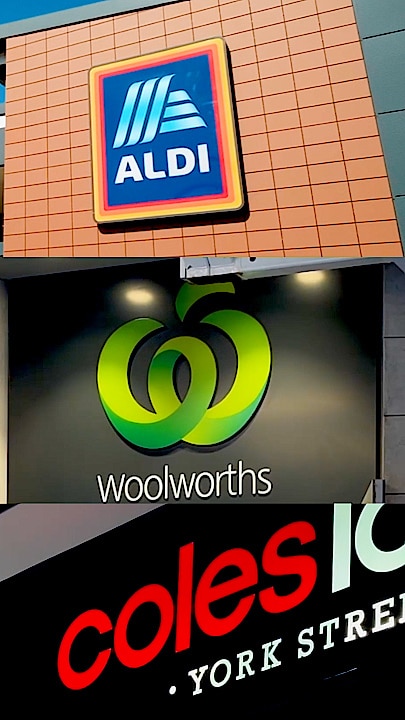
Business
Don't miss out on the headlines from Business. Followed categories will be added to My News.
More than 20 years ago, a largely unknown German supermarket chain quietly launched its first stores in Australia.
Each store carried just 900 products – 90 per cent of which were unrecognisable brands.
Customers were required to bring and pack their own bags. There were no “loyalty” programs or other gimmicks.
At the time, very few industry experts would have considered it a model for success.
But with inflation climbing and the cost of living soaring, more Australians are now prioritising their finances.
While shoppers struggle with their budget, major supermarkets continue to ring up large profits.
Allegations of price gouging by Australian supermarkets have even led to a Senate inquiry by the country’s consumer watchdog.
Strong third contender
Coles and Woolworths have been referred to as “ColesWorth” due to their dominance in the supermarket space, with the Australian Competition and Consumer Commission finding the pair makes up two-thirds of supermarket grocery sales nationally.
The Australian supermarket sector rakes in about $140bn nationally.
The Woolworths Group is the market leader with a share of 37 per cent, followed by Coles (28 per cent), Aldi (10 per cent) and Metcash (7 per cent).
The ACCC described Aldi as a “crucial lower-priced alternative” that helped put downward pressure on prices.
But they said the German-based company “did not compete head-to-head with Coles and Woolworths” on all of their products.
Retail Doctor Group founder Brian Walker said Australian consumers have benefited for many years over the large number of supermarkets nationally.
“It used to be the duopoly of Coles and Woolworths but that’s no longer the case,” he said.
“Aldi has become a very definite third with their convenience and focus on price.”
Professor of marketing and consumer behaviour at the Queensland University of Technology Gary Mortimer said Coles and Woolworths are being exposed to greater competition than ever before.
“Consumers have become more educated in how they can access low-priced food and groceries,” he said.
“It is now a very competitive marketplace when it comes to food and groceries.”
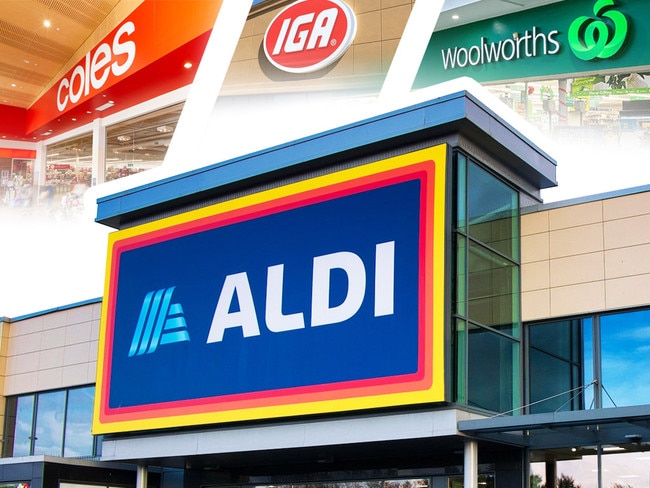
The rise of Aldi
The virtually unknown German supermarket chain opened its first stores in Australia in 2001.
Industry experts say Aldi pounced on a gap in the grocery retail market with their low prices and “no-frills” approach.
It continues to offer only long conveyor belts and seated register operators.
It never faced customer backlash for getting rid of free single-use plastic bags, as it never offered them for free in the first place, always charging 15c.
Mr Mortimer said in the 24 years Aldi has been in Australia, they have opened about 600 stores.
“Coles on the other hand has around 850 supermarkets, and it’s taken them 100 years to get there,” he said.
“It’s projected at this growth, within probably the next five to 10 years, Aldi will have more supermarkets than Coles does.
“That’s an incredibly fast growth period. They have actually grown faster here in Australia than they did in the US.
“They’re still yet to enter into states like the Northern Territory or Tasmania, so there’s still more growth to be had.”
Mr Walker said Aldi’s Special Buys – unique products often located in the middle of the store that range from DIY, kitchenware, garden furniture to sports and camping – created the atmosphere of a “surprise bargain”.
“It creates some theatre in the store,” he said.
In recent times both Coles and Woolworths had “suffered some reputational damage”, Roy Morgan chief executive Michele Levine said.
“People thought that they were gouging prices, that they were ripping them off, and that’s had a huge impact on how people see them,” she said.
“They’ve moved from being the most trusted brands in Australia to among the most distrusted brands.
“In a cost of living crunch, Aldi’s consistent position of being, no-frills, low prices, was just naturally perfect for that environment.”
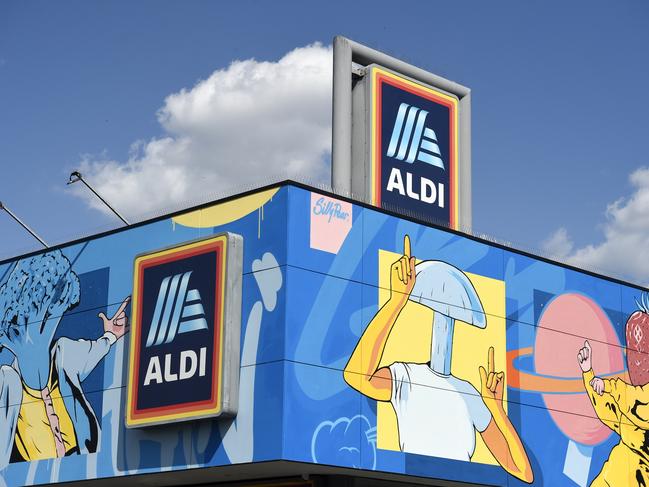
Can smaller rivals compete?
Mr Mortimer said IGAs and the Foodworks group were more exposed to a price sensitive consumer.
“Their business model being predominantly franchised adds another layer of costs into their pricing structure, so that becomes more challenging for them,” he said.
They are strategically shifting their focus away from price, Mr Mortimer said, and moving more towards leveraging local brands and unique ranges.
“There are some consumers that do actively seek out unique gourmet products, local brands, supporting local communities,” he said.
“Many of the owners of these supermarkets live within the suburb and support community events and schools.”
The rise of private labels and phantom brands
Private label products are products that a retailer gets produced by a third party but sells under its own brand name.
Mr Mortimer said decades ago, private label products were a generic, plain, packaged, lower quality alternative.
“Today, supermarkets have invested millions of dollars in improving the quality, and we’re seeing a tearing effect,” he said.
“So we still got the generic, plain packaged, generally flour and table salt on the bottom shelf. And then you have a top tier like Coles Finest and Woolworths Select.”
Aldi doesn’t sell any “Aldi” branded products. Instead it trades in phantom brands, such as Belmont ice cream, Radiance cleaning product and Lacura skincare.
Phantom brands are private label products without any reference to the business’ brand or logo.
These brands are intended to overcome perceptions of private label items being lower quality.
In 2016, Woolworths launched its own range of phantom brands. Coles followed suit in 2020 with brands including Wild Tides tuna and KOI toiletries.
Mr Walker said ultimately private label and phantom brands were about dominating market share and growing gross profit.
He said Woolworths had about 28,000 products in their stores, with about 21 per cent of them private label. Coles’ private labels sit at around 40 per cent.
“It also gives the supermarkets negotiating tension with their suppliers, if they can exercise that muscle – why would we want your product?” he said.
“We’ve already got a phantom level of that category, and it produces five per cent better profit.”
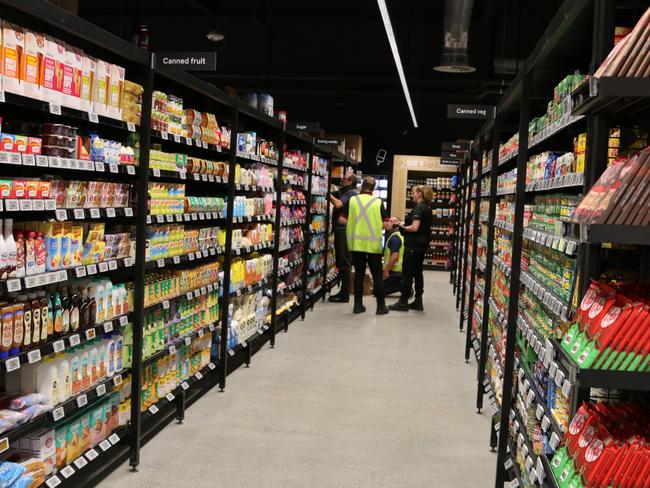
So, what supermarket do Aussies prefer and why?
More than 70 per cent of Australians go to Woolworths in an average month. Coles is about the same, while only 45 per cent of Australians shop at Aldi every month, data from Roy Morgan reveals.
But when it comes to customer satisfaction, Aldi has been voted as the top supermarket for seven years in a row.
This award, run by consumer review and comparison website Canstar Blue, is voted on by thousands of Australians every year, rating the major supermarket brands across categories including value for money, freshness of produce, checkout experience, customer service, specials available, store layout and presentation and product range.
In the most recent awards, Aldi took out the top rating of five stars in all but two categories, while Woolworths only got five stars for product range and IGA for checkout experience and customer service.
Canstar Blue spokesperson Eden Radford said Aldi’s consistency in providing a cost-effective shop that can also deliver on quality when it comes to their own brand products is what’s kept shoppers returning.
“In an economy with increased living costs and high housing payments, many household budgets are getting squeezed, which is why shoppers are focused on getting the best bang for their buck,” she said.
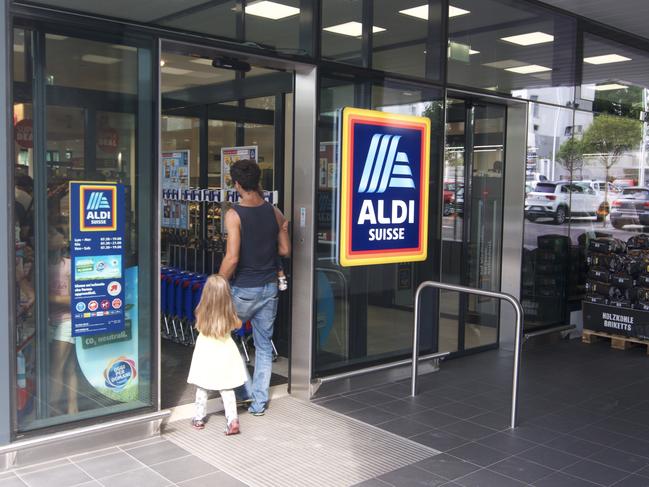
“So, while shoppers may rate Woolworths higher for product range, or IGA for checkout experience, at the end it’s about how much they’re paying at the till.”
More than half (65 per cent) of consumers say Woolworths provides all of the brands and products that they’re interested in, compared to Coles (60 per cent) and Aldi (35 per cent).
Ms Levine said Woolworths and Coles are still seen as being “close to home”, which is really important to consumers.
“There are just simply more Woolworths and Coles than there are IGAs and Aldis,” she said.
“Proximity and convenience have always been important, and they continue to be important.”
How are consumer habits changing?
Ms Radford said more shoppers are going to multiple supermarkets, to get the best value for money for their groceries.
More than a third (38 per cent) of Victorians have started splitting their grocery shopping between supermarkets to maximise savings.
Only a quarter do all of their shopping within the same supermarket chain.
“Significantly, last year was the first time Costco, the members-only bulk-buying supermarket warehouse, won an award from Canstar Blue for a supermarket category, which was for seafood,” she said.
“The win, along with shopper feedback, highlights a growing willingness among customers to try new supermarkets in search of quality produce at competitive prices.
“The data shows that reward points or promotions can even be enough to drive shoppers to try new supermarkets.
“While previously proximity to a specific supermarket or particular product availability may have driven brand loyalty, shoppers are now far more focused on their budget’s bottom line.”
Mr Mortimer agreed the cost of living and the “politicising of food prices” had created a more price sensitive and savvy consumer.
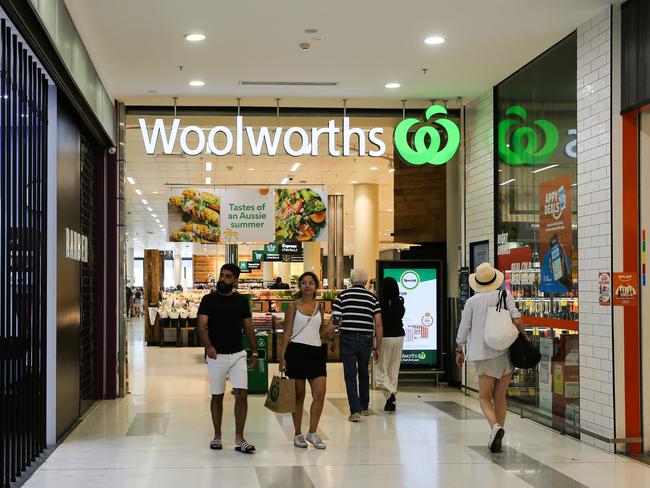
“These types of shoppers will initially start with a food discounter like Aldi to buy the basics and save, then they’ll move to either a big supermarket to pick up the specials,” he said.
“They may even look at alternative food retailers such as Amazon, which now has a wide range of dry grocery and other consumables.
“We’ve also got other players in the market, like the Reject Shop that carries a range of dry groceries and consumables, shampoos, moisturisers, conditioners, cleaning goods.”
Prior to the pandemic, food and grocery online shopping made up only about two per cent of supermarkets’ revenue.
He said this had since ballooned to about 12 per cent for Woolworths today and about 10 per cent for Coles.
Mr Walker said consumers were also moving “from the trolley to the basket”.
“In other words, we’re less likely to do the big weekly trolley fill. We tend to do two or three visits a week,” he said.
“The other trends we see for consumers is heightened focus on sustainability, single use plastics, sourcing products responsibly.
“Lifestyles as consumers are getting busier, so we see a much greater focus on fresh, ready to eat, meals and snacks.
“We’ve seen some divergence into the sushi bars and coffee bars located in supermarkets. I think that’ll be a definite strategy.”
Originally published as Breaking the supermarket duopoly: Inside Aldi’s rapid rise




